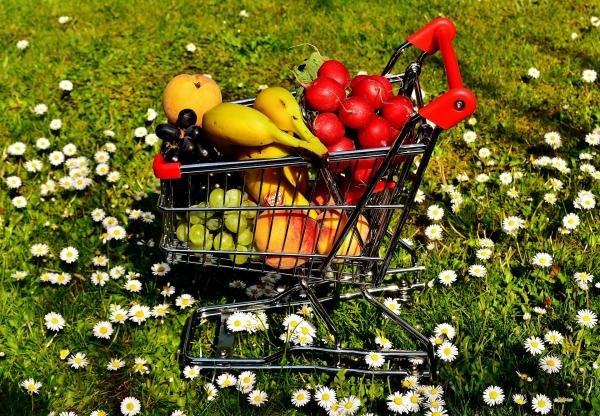I have always thought that real-time help in making food choices can move us towards “better” ones, especially when motivated by saving a little green as you eat more green. So I was eager to see the findings of this study. I was in for a bit of a disappointment and a lesson we can share.
While nutrition’s holy grail is for us to eat only nutritiously, food choices involve many other factors, including taste, culture, availability, and marketing. Marketing that combines what you usually select, with an alternative, at a lower price would seem to be a powerful approach. This study, unlike prior ones that gave you coupons for fruits and vegetables irrespective of your purchase history, based coupons and food suggestions on what you purchased. The purchase information came from customer loyalty cards, and the coupons arrived via email. Of course, “artificial intelligence,” almost a guarantee of publication in healthcare journals, was used to offer the substitutions and coupons.
The researchers carried out a cross-over study, half the intervention group participants, half in the control. Mid-study, after a month washout period, the roles were reversed, crossed-over. Foods with the lowest nutritional ratings (on a 0-5 scale) triggered coupons for similar food items that were more nutritional (mid-range). All participants received a 5% discount just for using their loyalty cards, which allowed the researchers to track food choices and then given $10 in discounts and coupons each week for substitutions from their usual choices. The control group got generic coupons worth $2.
The study involved 209 participants, median age 55, 90% women (as being the primary food purchaser was a study requirement)
"Personalized healthy food incentives modestly improved both primary study outcomes, with more meaningful changes observed in the cross-over intervention period. These results demonstrate that the intervention led to a small but significant improvement in grocery purchase quality through increased purchase of foods targeted by the intervention.”
The keyword is, of course, “modestly.” The researcher’s measure, the Grocery Purchase Quality Index, GPQI, rose by about 1 point on a 75 point scale, about 1.3% more nutritious choices, and only in one of the two cross-over groups. They did find that the coupons were redeemed more frequently (7-10%) than the national average, which was interesting, at least to me, only 1%. But analysis suggested that personalization was a more significant driver of change than the discount.
I found the results disappointing; the change was tiny. The researchers had demonstrated that an algorithm could alter our nutritional decisions, but Amazon and Facebook have demonstrated altering our choices far more effectively.
There was one additional detail that might have impacted the results, the socio-demographics of the participants. 90% were Caucasian, 49% had a bachelor’s degree or higher, 50% made over $100,000, 98% were non-smokers, and 75% self-reported good or excellent health. Most importantly, the baseline GPQI score, the measure of nutritional purchases, was already 10 points higher than national median values. Are these the individuals we wish to target?
The participants were perhaps not the best group to have studied; they had money, access, and already reasonable nutritional choices. Would the results differ if the participants had poorer baseline habits? Would discounts and coupons be more of an incentivized nudge for those on a tighter, less discretionary budget? All questions that remain unanswered.
Source: Effect of Personalized Incentives on Dietary Quality of Groceries Purchased A Randomized Crossover Trial JAMA Network Open DOI:10.1001/jamanetworkopen.2020.30921




